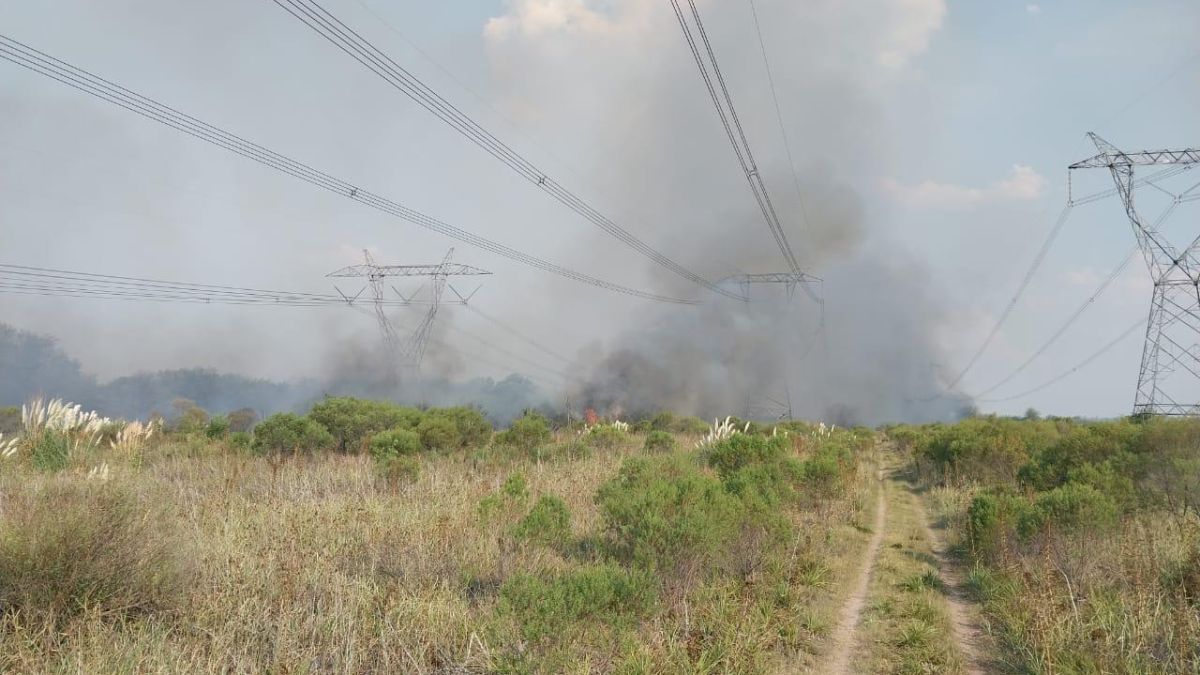CAMMESA’s explanation indicates that the global demand for Argentine Interconnection System (SADI) at 3:59 p.m. on Wednesday it was 26,434 MW, and in GBA of 10,455 MW (having set the summer record minutes earlier for that region).
Prior to the shutdown, the system was operating in a normal condition and had sufficient generation and reserves, both rotating and stopped reserves, to meet the high demand. In addition, all transmission limits were met in the SADI regions.
However, at 3:59 p.m. on Wednesday, as reported by transener, the sequential disconnection of the three High Voltage Lines took place that link the General Rodríguez Transformer Station with the area of Coast, as a consequence of short circuits caused by a field fire.
“The smoke contains carbon particles that make the air a conductor and can produce a short circuit between the conductors, which causes the automatic disconnection of the line. Once the fire is controlled, the line can be replaced without major inconveniences,” they indicated from the company to explain the short that was generated in the cables.
“In conditions of high demand, the triple disturbance With the exit of the last link with the Rodríguez Transforming Station, it generated oscillations in the System and the opening of additional links to the previous ones, which resulted in the separation of SADI into two main islands”, they explained from Cammesa.
One island encompassed the entire North (the region NEA, Litoral, North NOA and Province of Buenos Aires North), without affecting your claim). The other island, the South (Greater Buenos Aires, Province of Buenos Aires SOUTH, Comahue and Northern Patagonia), suffered outages due to load relief due to underfrequency, which Cammesa ordered to be replaced immediately. Additionally, there was the disassociation of the line North Santa Cruz – Santa Cruz River of the 500 kV system.
“The affectation of the demand was up to 11,527 MW from the final separation of the Rodríguez Station with Litoral, which caused other electricity corridors to go out of service, such as the link between Comahue-Cuyo, Rosario-Córdoba and Tucumán-Santiago del Esteroproducing practically total affectations in the regions Cuyo, Center and South NOA Mainly,” they stressed.
In this way, the supplied demand went from about 26,500 to some 15,000 MW, with an affectation close to 43% of generation. “The fault sequences produced a loss of supply due to untimely outputs of the order of 7,000 MW, of which 6,000 were thermal and some 1,000 MW nuclear. Of the total, some 4,500 MW were unavailable and were partially recovered with the passing of the hours”, they specified from Cammesa.
Nuclear power plants were disconnected from the network as part of the protocol when a phenomenon of these characteristics occurs in high-voltage networks. The company reported that both Atucha I and Embalse will resume operating and supplying energy to the grid 48 hours after the disconnection occurred, since it requires a series of technical controls for it to be safe.
As of 7:09 p.m., CAMMESA reported that the transmission system in 500 kV was with all its lines in service, for which the replacement of all remaining cuts was orderedleaving the network operators working on the definitive normalization of the regional transport systems that could continue to be affected.
“During the night peak, operating conditions were very tight, especially in the GBA area, due to the high demand and generation supply affected by the event,” they clarified.
The day after the event, all the lines were in service and without declaration of risks. However, in Greater Buenos Aires, since the peak of Thursday night, a synchronous compensator of the Ezeiza Transformer Stationwhich decreases the reactive reserve for normal voltage control in the load center of the system.
Investigation
As a consequence of the triple simultaneous fault that affected the system, areas of the Cuyo region and Patagonia had total supply cuts since the supply of the region was disconnected. Something similar happened in areas of Greater Buenos Aires, but not in the case of the North, whose supply is from Salto Grande.
The Minister of Economy, Sergio Massa, He asked the justice of Campana, the area where the fire took place, to investigate whether it was intentional.
The federal judge of Campana, Adrian Gonzalez Charvay investigating the fires that yesterday caused the power blackout that affected millions of homes in a large part of the country, ordered the search for images from public and private security cameras in nearby areas and the collection of testimonies from neighbors, knowing that the Technical expertise may take a few days.
Source: Ambito




